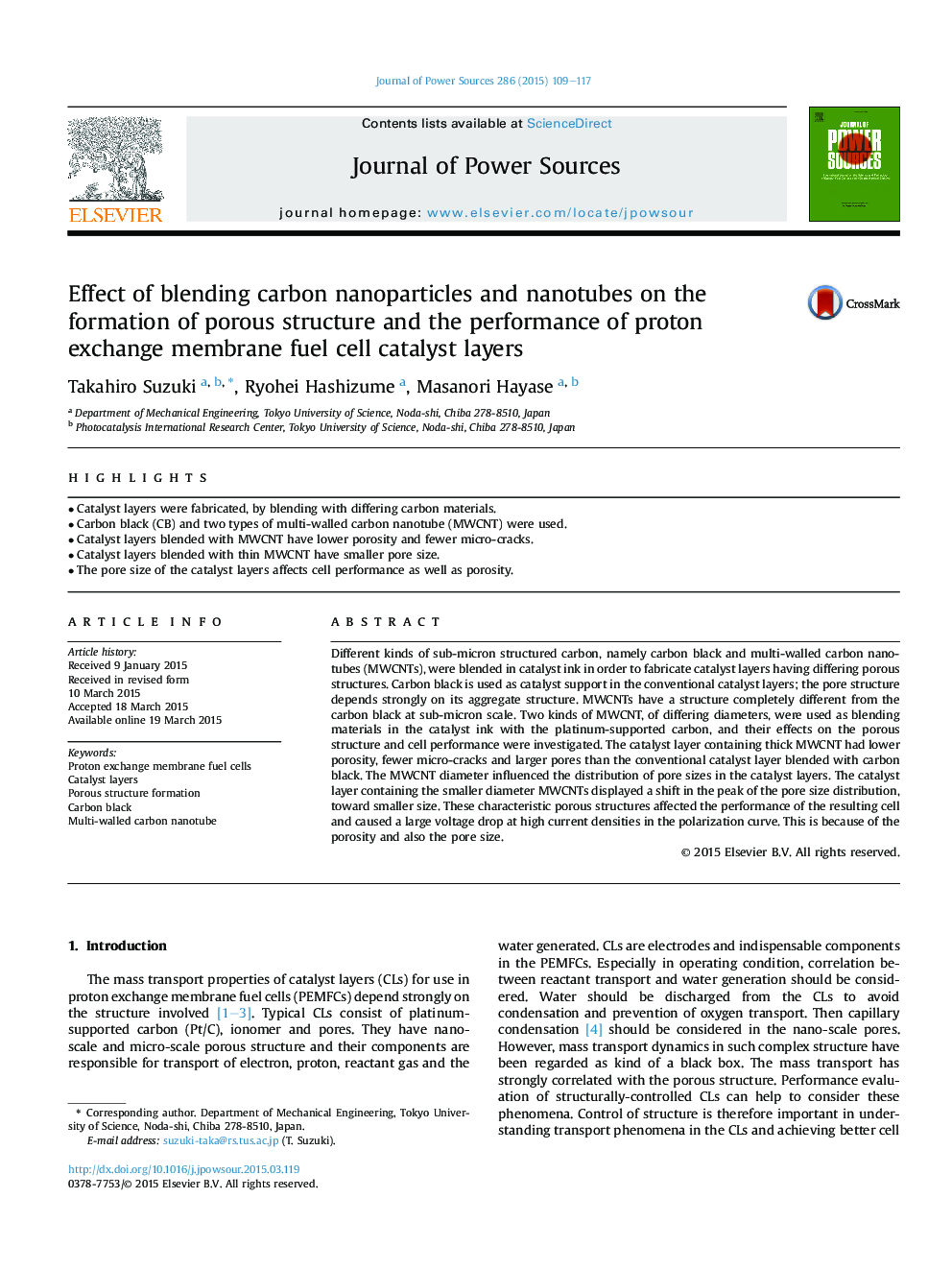| Article ID | Journal | Published Year | Pages | File Type |
|---|---|---|---|---|
| 7731960 | Journal of Power Sources | 2015 | 9 Pages |
Abstract
Different kinds of sub-micron structured carbon, namely carbon black and multi-walled carbon nanotubes (MWCNTs), were blended in catalyst ink in order to fabricate catalyst layers having differing porous structures. Carbon black is used as catalyst support in the conventional catalyst layers; the pore structure depends strongly on its aggregate structure. MWCNTs have a structure completely different from the carbon black at sub-micron scale. Two kinds of MWCNT, of differing diameters, were used as blending materials in the catalyst ink with the platinum-supported carbon, and their effects on the porous structure and cell performance were investigated. The catalyst layer containing thick MWCNT had lower porosity, fewer micro-cracks and larger pores than the conventional catalyst layer blended with carbon black. The MWCNT diameter influenced the distribution of pore sizes in the catalyst layers. The catalyst layer containing the smaller diameter MWCNTs displayed a shift in the peak of the pore size distribution, toward smaller size. These characteristic porous structures affected the performance of the resulting cell and caused a large voltage drop at high current densities in the polarization curve. This is because of the porosity and also the pore size.
Related Topics
Physical Sciences and Engineering
Chemistry
Electrochemistry
Authors
Takahiro Suzuki, Ryohei Hashizume, Masanori Hayase,
